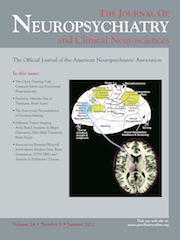Proposing a New Management for Freezing of Gait in Parkinson’s Disease
To the Editor: Parkinson's Disease (PD) is a common progressive neurodegenerative disease. One of the most important symptoms of PD is gait disturbance which is especially present in severe states of the disease.1 An unknown and unclear PD gait disturbance is Freezing of Gait (FOG).2 FOG is defined as an episodic inability to generate effective stepping in the absence of any known cause, other than Parkinsonism. This phenomenon refers to transient episodes lasting seconds (less than one minute) in which walking is halted. This symptom is either poorly treated by dopaminergic treatments, or very large doses of these drugs are needed to improve it.3 Barbaue realized that there is a significant increment in FOG beginning, nearly one year after using high-dose levodopa treatment,4 although it is not easy to diagnose if the cause of FOG is the aggravation of the disease or it is the side effect of the drug.
Since FOG is one of the most disabling and annoying symptoms of the PD, omitting this symptom is a challenging subject for physicians. Although different putative treatment strategies are proposed for FOG phenomenon, no absolute treatment exists.
Upon our unpublished studies, we have presented a model based on physiological findings which simulates the stride variability of PD patients. In the state that the patient shows FOG, our model produces a long term stride that represents the patient’s halt. Introducing the model, we considered the Basal Ganglia (BG) structure, the relation between BG blocks and, the various neurotransmitters of BG. The model is able to simulate normal persons, PD patients with and, without FOG states.
To assess the FOG behavior, the weights between different blocks of the BG that represent different neurotransmitters, were investigated. The results of primary studies on the model show that the glutamate neurotransmitter has a key role in producing FOG. Decrease in glutamate leads to reduction in FOG episodes. Therefore, using glutamate antagonists is useful in suppressing FOG. However, our model has showed that it would need high doses of glutamate antagonists to omit FOG. Using high doses of glutamate antagonists may result in some side effects. To avoid these probable side-effects, it would be more reasonable if we would be able to use fewer doses of the glutamate antagonists. Therefore, we suppose that using a supplement agent to the glutamate antagonists would help us to omit FOG using less doses of glutamate antagonists. Our previous studies have shown the positive effect of gabapentin in Parkinson symptoms.5 Considering this background, we used gabapentin as a supplement to the glutamate antagonists. The simulations have showed that the FOG behavior has been improved in an acceptable manner. It should be noted that both the drugs were used in low doses.
According to model results, it seems that using glutamate antagonists in addition to gabapentin in low doses can be a suitable treatment for FOG. However, this hypothesis needs to be validated using clinical trials to prove its applicability.
1 : Parkinson’s disease Diagnosis and Clinical Management, 2nd ed. New York, Demos Medical Publishing, 2008Google Scholar
2 : Gait disturbances in Parkinson disease. Did freezing of gait exist before levodopa? Historical review. J Neurol Sci 2011; 307:15–17Crossref, Medline, Google Scholar
3 : What can we learn from freezing of gait in Parkinson’s disease? Curr Neurol Neurosci Rep 2010; 10:345–351Crossref, Medline, Google Scholar
4 : Six years of high-level levodopa therapy in severely akinetic parkinsonian patients. Arch Neurol 1976; 33:333–338Crossref, Medline, Google Scholar
5 : Modeling the Parkinson's tremor and its treatments. J Theor Biol 2005; 236:311–322Crossref, Medline, Google Scholar



